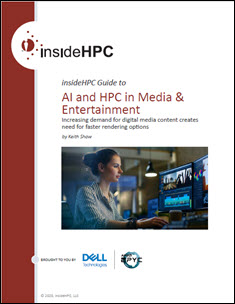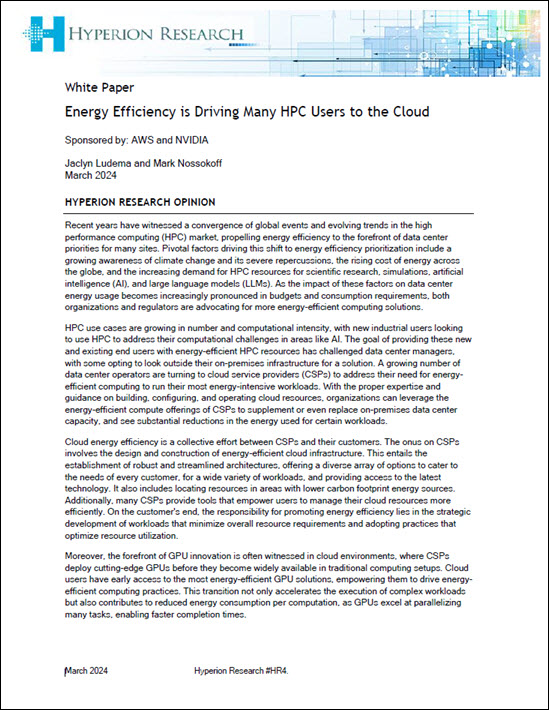 In this white paper sponsored by our friends over at Dell Technologies, we take a look at AI and HPC in Media & Entertainment where an increasing demand for digital media content creates need for faster rendering options.
In this white paper sponsored by our friends over at Dell Technologies, we take a look at AI and HPC in Media & Entertainment where an increasing demand for digital media content creates need for faster rendering options.
The ongoing increase in the use of visual effects (VFX) and computer-generated imagery (CGI) and animation in digital content media creation for television, movies, and streaming services has accelerated the amount of material that requires rendering, from a workstation to a data center render farm environment. Demands for digital media content creation that requires rendering include: new digital resolution requirements, demand for new media content, and new realities in working conditions for employees who are working from home require new hardware and networking solutions to address poor or limited bandwidth in residential areas compared with in-office equipment.
This technology guide, insideHPC Guide to AI and HPC in Media & Entertainment, explores how the increasing demand for digital media content creates need for faster rendering options.
Introduction
The ongoing increase in the use of visual effects (VFX) and computer-generated imagery (CGI) and animation in digital content media creation for television, movies, and streaming services has accelerated the amount of material that requires rendering, from a workstation to a data center render farm environment.
Demands for digital media content creation that requires rendering include:
- New digital resolution requirements, such as 4K and Ultra-High Definition (and eventually 8K), increase the time it takes to render content compared with older formats such as 2K, 1080p, and 720p.
- Demand for new media content due to societal changes brought about by the COVID-19 pandemic as more people stay home to consume digital entertainment. Not only are people looking for new options and services, such as on-demand platforms like Disney+, HBO Max and Apple TV+, but these services are also providing older content in new resolution formats.
- New realities in working conditions for employees who are working from home require new hardware and networking solutions to address poor or limited bandwidth in residential areas compared with in-office equipment.
In addition, companies that distribute digital media content to customers face challenges that require high performance computing options. As more customers view content on mobile devices with different screen sizes and resolution requirements, content needs to be distributed in the proper size and resolution for optimal efficiency.
Many of these companies are utilizing artificial intelligence (AI) models as part of their prediction and recommendation engines for content. These models require both additional data storage, as well as processing speed in order to make better and more accurate predictions and recommendations in real-time.
While many TV and movie studios have used high performance computing solutions for years in their content creation and storage process, these increased demands will increase pressure on them to deliver content faster and more efficiently than ever before. For these companies, as well as smaller businesses looking to grow their rendering operations, new equipment can provide tools to meet the appetite of today’s mass-content consuming audience.
Over the next few weeks we will explore how the increasing demand for digital media content creates need for faster rendering options and how solutions from Dell can help streamline the process :
- Introduction
- The Rendering Process
- Serving and Streaming Requirements, Requirements for Recommendation Engines, Challenges for Content Creators, New Demands Require New Gear
Download the complete insideHPC Guide to AI and HPC in Media & Entertainment, courtesy of Dell.



